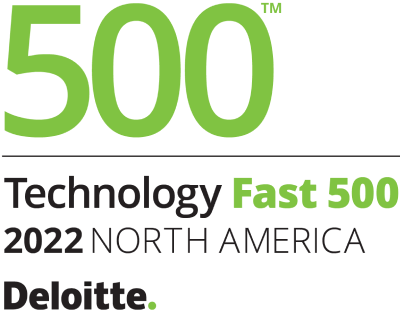A lot of research has been done confirming that intrinsic motivators (self-worth, personal growth, passion, satisfaction, fun, purpose and meaning, making a difference, and so on) are more powerful than extrinsic motivators (social status, money, power, titles, perks, winning, public recognition, and so on). This may explain why, according to Deloitte, only 13% of employees report being passionate about their work.
In their 2015 book, Primed to Perform, consultants Neel Doshi and Lindsay McGregor share research and case studies of leaders creating high-performing cultures based on three direct motives for work.
Play
You’re most likely to succeed when your motive is play; when you engage simply because you enjoy it. Mindful elements like curiosity, being open, nonjudgmental, and experimentation are at the heart of play. People intrinsically enjoy learning and adapting. Because the play motive is created by the work itself, it’s the most direct and most powerful driver of high performance.
Plato wrote, “You can discover more about a person in an hour of play than in a year of conversation.” Numerous studies support that play is important to our survival, vitality, cultivating empathy, collaboration, and creativity.2–3 It’s taken me years to stop being the grumpy “get back to work” guy to understand this. I still have to wrestle that guy to the ground sometimes. How much do you play at work? Do you truly know your co-workers?
Purpose
The purpose motive happens when you do something because you value the outcome. You may or may not enjoy the kind of work you do, but you definitely value its impact. While purpose is a powerful driver for performance, it’s one step removed from the work itself, which generally makes it a less powerful motive than play.
Potential
The potential motive occurs when you take part in an endeavor because it will eventually lead to something you believe is important. An example would be a stepping-stone job to get a promotion. The potential motive is not as powerful as play or purpose—it’s two steps removed from the work (play) itself.
Together, play, purpose, and potential are known as direct motives because they’re most directly linked to the work itself. A culture that inspires employees to bring play, purpose, and potential to their jobs creates the opportunity for high and sustainable performance and happier work cultures.
Doshi and McGregor also cover three indirect motives, including emotional pressure (guilt or shame), economic pressure (get a reward or avoid punishment), and inertia, where employees do what they do just because they can’t think of a good reason to leave. When your reasons to work are due to indirect motives, your performance tends to suffer.
In their estimation, the motivators you focus on determine which one of the four kinds of leaders you are.
4 Kinds of Leaders
1. Quid Pro Quo Leaders
This leader believes in something for something. They give rewards for good behavior and punishments or threat to try to control bad behavior. They produce high levels of indirect motives in their employees.
2. Hands-Off Leaders
This leader uses neither direct nor indirect motivators. They get involved only when there’s a problem. They generally have good intentions, believing their teams want lots of space. But they’re wrong. Teams perform best when the leader is involved.
3. Enthusiast
This leader tries everything, direct and indirect, but has a tendency to cancel out the direct motives through lack of focus.
4. Fire Starter
This leader uses direct motivators and do whatever they can to eliminate the indirect motivators. They play.
Most of us fluctuate between these kinds of leaders over time and generally without specific intention. These days, I make it a practice to be a Fire Starter. I’m not great at it yet, but practicing makes every week fun.
Similar Themes
Other authors have explored similar themes. In Drive, best-selling author Daniel Pink used 50 years of research in behavioral science to argue that external motivators (or pleasure rewards) like promotions and money are not the best drivers of high performance. Instead, his research found the best motivators to be “intrinsic motivators” like the mastery of work, having a higher purpose, and autonomy—the desire to direct our own lives.
In Why We Work, Barry Schwartz shared, “Satisfied people do their work because they feel that they are in charge. Their workday offers them a measure of autonomy and discretion. And they use that autonomy and discretion to achieve a level of mastery or expertise. They learn new things developing both as workers and as people.”
In Delivering Happiness, Tony Hsieh shared how Zappos created a corporate culture based on pleasure, passion, and higher purpose. Happy employees provide the level of service that makes for happy customers who then spend more money. Hsieh has since launched a consulting company by the same name with his co-founder, Jenn Lim. Today, Delivering Happiness inspires passion and purpose in the workplace.8 I’m proud to say they are a partner of RethinkCare. Mindfulness and culture go hand in hand.
Don’t Chase the Wrong Things
Instinctively, most of us chase after pleasure and indirect motivators. Over time, we may find that monetary rewards and promotions are not the source of sustainable happiness. What if you flipped your personal model on its head to pursue direct motivators? How would that change your motivations as a leader and how you manage teams?
Looking back, I pursued mastery and autonomy intuitively at the earliest stage in my career. Purpose, not so much. That approach delivered results for me. And a commanding style of leadership, when stressed, likely caused me to withhold the same opportunities for my direct reports to find their own direct motivators. Command and control worked for many decades in business. Now it doesn’t.
Photo by Ian Schneider on Unsplash











